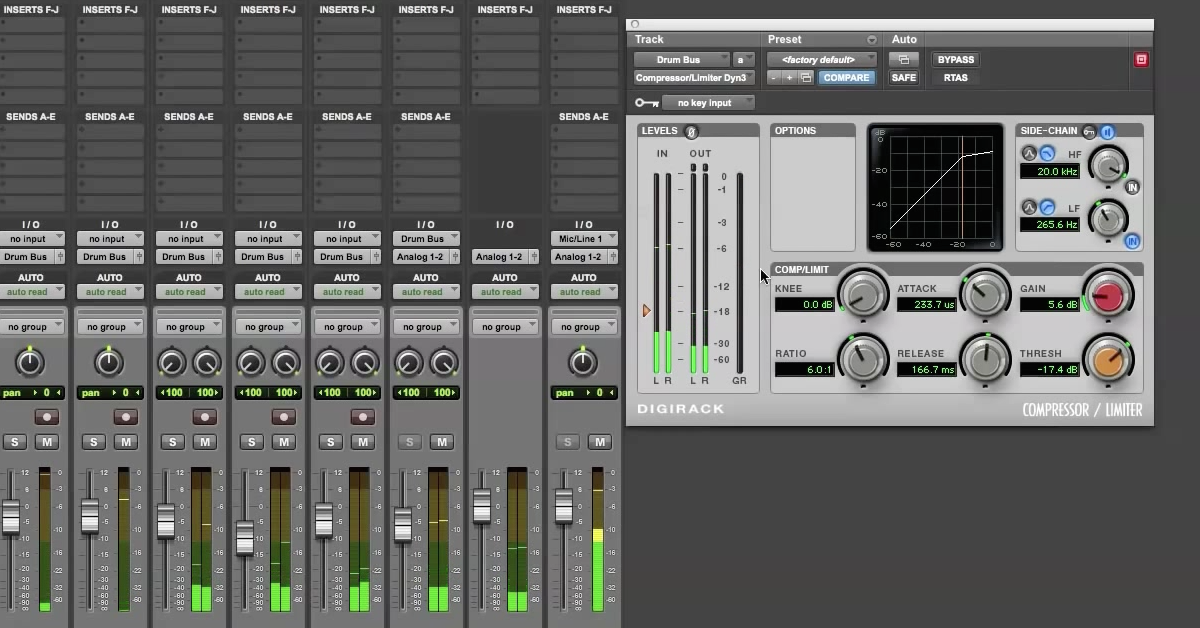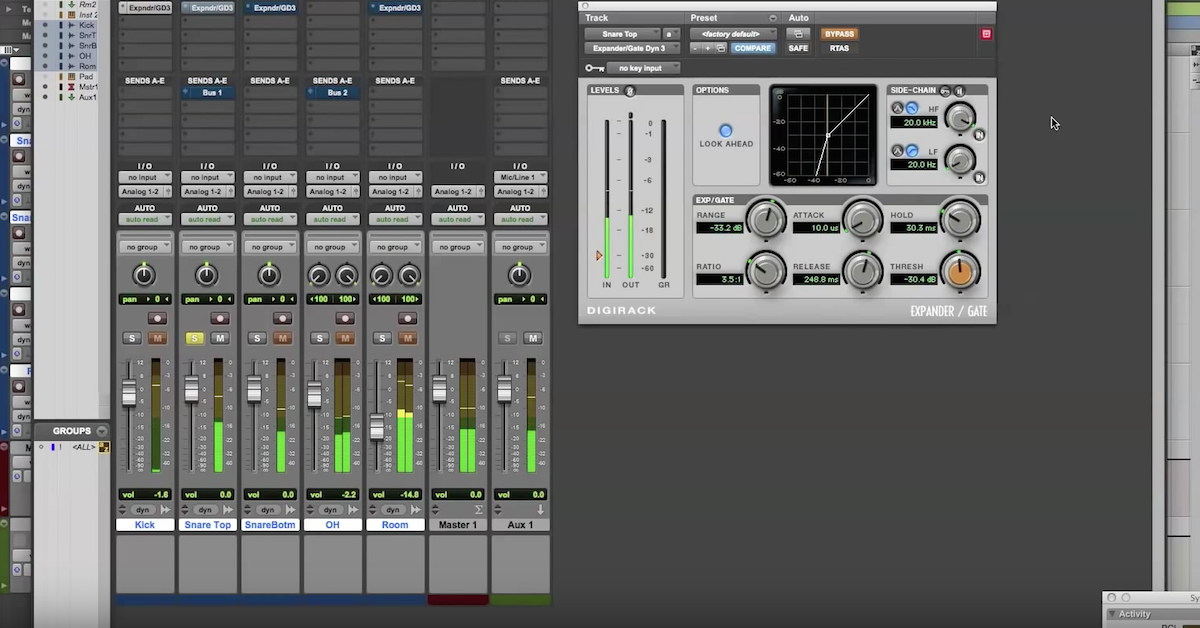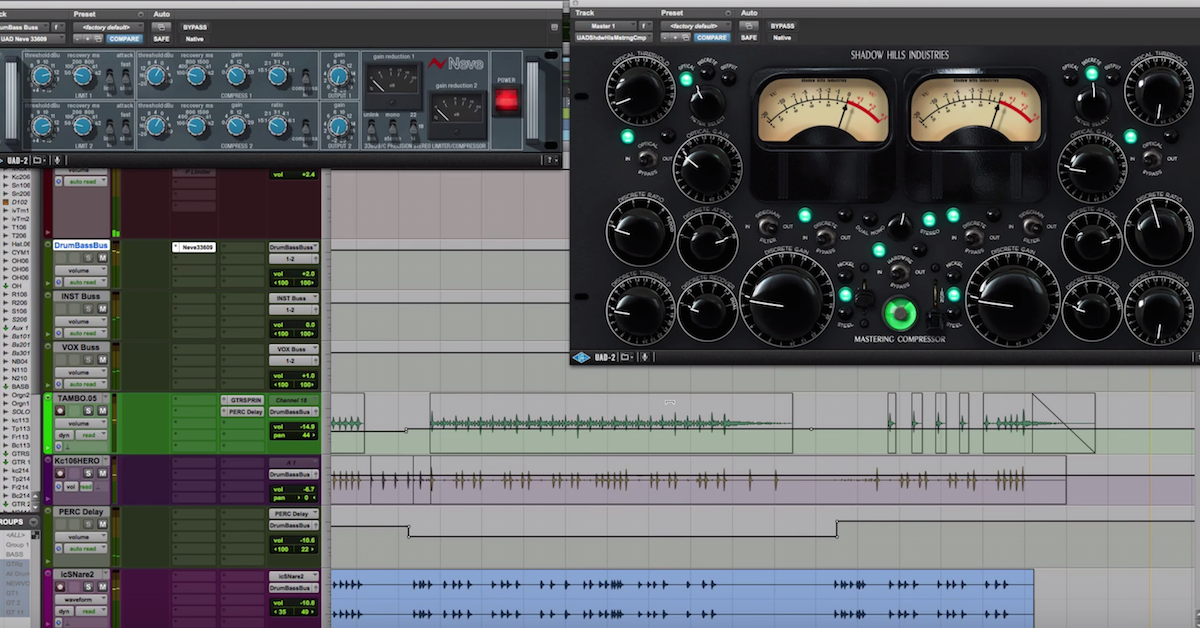3 Ways to Use Compression to Manipulate Drums in a Mix
One of the most common uses for compressors is applying them to sources to make them seem more punchy and impactful.
Today, I’m going to show you a couple of tools and techniques that, if used properly, can make your mixes sound more powerful and punchy.
Let’s listen to the kick drum in context.
[mix]
[kick drum]
Okay. So I think it sounds pretty good, but the drum itself could actually be more impactful and powerful, and this is going to help it cut through the mix a little bit better.
So let’s enable the dbx 160 compressor, and I’ll show you how I generally try to achieve a punchy sound.
[kick with compression]
That’s a little bit too much compression. It’s a cool effect. Let’s listen to it bypassed.
[kick, no compression, then with compression]
It definitely sounds like the drummer is hitting harder, which can be perceived as punch, but it’s also getting rid of a little bit too much of the low frequencies, so I’m going to alter the controls here until I have a result I’m happy with.
[kick, adjusting compression]
There we go. I like that setting.
Again, you sort of have to sacrifice low end, particularly when using a compressor like this. But at the cost of low end, you have more impact and power, and if you have other sources, or perhaps kick drum layers that have a lot of low end, you don’t really need to worry too much about it.
So I’m pretty happy with the setting, I really like this compressor, because the ease of use, you have only really three controls, and it means that you can achieve desired results really quickly.
Okay, so next, allow me to show you how I am going to try to achieve a similar effect, a more punchy kick drum sound. This time using a different type of compressor.
This is the Valley People Dynamite, which is a collaboration between Softube and Universal Audio. Let’s hear that kick drum with the plug-in bypassed.
[mix, no compression on kick]
[kick]
You hear how the kick drum sounds as if the drummer is hitting a little bit harder? That’s exactly what I’m going for.
So I’m going to alter the threshold, the release, and the range, so you can hear the differences and how I end up at the sound that I get.
[kick, adjusting compression settings]
Obviously that doesn’t work.
Take notice, this is very important when applying compression to drums especially, if your release is set too slow, then you are not allowing the compressor to return to its original state before the next drum hit, and that really is counter intuitive to what we want to do.
We want to set the release relatively quickly, so that by the time the drum is hit again, the compressor has returned to its original state.
Let’s take a listen to how the sound changes as I alter the release.
[kick, adjusting release]
What we are also hearing is the tail end, or the reverberation, or the sound of the drum in the room is enhanced with a slightly slower release. So I actually want a pretty fast release.
[kick, adjusting release]
One of the terms that we hear a lot when talking about compression as it relates to drums is “snap” or “snappiness.” Right now, I’m going to show you how I use compression to achieve what I like to think of as “snap” on a snare drum.
Okay, so let’s listen to this sound in context.
[mix]
[snare]
Okay, so let’s take this sound and give it a little snap.
[snare, with compression]
I’m going to change the threshold on the dbx 160.
[snare]
You hear how when I move the threshold all the way to the left, it has this really snappy, quick attack sound to it.
What I’m listening for when applying compression like this is a healthy balance between the original signal and that snap.
[snare with compression]
So that’s obviously too much, so I’m going to dial it back.
[mix]
Alright, let’s move on to the Valley People Dynamite.
[snare with compression]
That’s a really punchy sound.
[mix]
We have a similar snappy sound when I alter the threshold.
[mix]
Okay. That sounds pretty good to me.
Next, I’d like to show you what I think of as knock.
So we have snappiness, or snap, in regards to snare drum, which I think of as high frequency, fast attack, not unlike the sound of your finger snapping.
But knock, to me, has a more rich, mid-range content to it. So let’s take a listen to this snare drum and I’ll show you how I add knock using compression.
[snare without compression]
Hear how there’s a good amount of low frequency content? Rememeber the dbx 160 sometimes sacrifices some of that low end, but what we get is a really nice knock, if we apply compression correctly.
[snare with dbx 160 compression]
There we go. It’s eating up that low end, but turning it into a really powerful sound. Let’s listen in context.
[mix]
Again, we really only have three controls, threshold, compression, and output gain, so I find it really easy. I’m pretty happy generally with around a six-to-one ratio, and I just tweak the threshold to find the spot I’m happy with.
Compression generally — that’s how it works is you apply it and there’s just some magical sweet spot that you stumble across if you know what you’re listening for.
Let’s listen to the Valley People Dynamite.
[snare, with VPD compression]
[mix]
[snare]
As you can hear, it’s doing something a little bit crazy to the tail of that sound, which I don’t entirely like, so allow me to tweak the settings until I’m happy.
[snare, adjusting compression]
[mix]
That’s not bad. I enjoy that sound.
Okay, if you have any questions, please get in touch. Again, this has been Ian Vargo. Keep an eye out for part four in a five part series all about compression.
Thanks!






